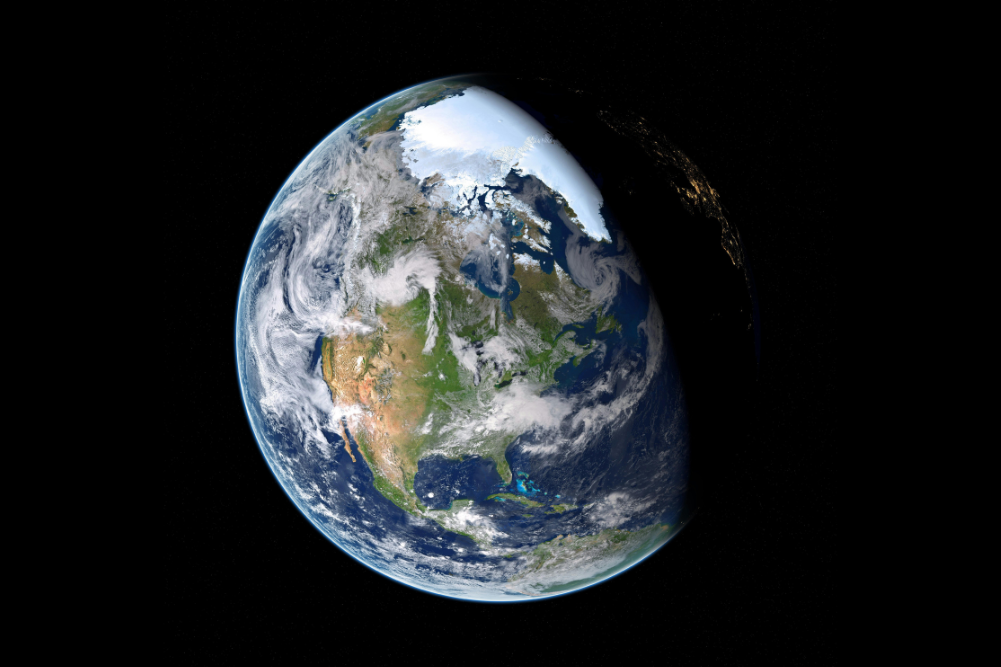The population puzzle
Following the Industrial Revolution in the 18th century, the world’s population started to shoot up exponentially on the back of abundant fossil fuels, and within the past few decades this upward graph has been rising very steeply.
Other influences affecting this population surge have been poverty in the developing world and religious opposition to contraception leading to unwanted births in many countries. During the 20th century, human numbers were boosted by medical advances, and death rates fell as people lived to an older age.
The population issue was first examined by the political economist Thomas Malthus, who depressingly predicted in the late 18th century that, unless kept in check, at some stage the human population would outgrow its resource base and be decimated by famine, disease and war. His ideas became very influential and have been debated ever since.
Due to a range of factors, particularly increases in crops yields, the world has yet to experience a global Malthusian crisis, although it could be said that many developing countries are currently in the grip of one. Food production has so far kept pace with population growth, although it is unfairly distributed as a result of market mechanisms.
Today, population is of one among a range of “big picture” issues facing us, the others being climate change, peak oil, resource depletion, food security and having enough water to grow food. Without a radical rearrangement of the way we run things, a Malthusian future is looking increasingly likely.
World population trends
Currently standing at 6.9 billion, and increasing at 1.1 per cent a year, human numbers are tipped to reach 9.2 billion by 2050. Some models suggest they will peak within the next few decades, while others see growth continuing upwards past 2100. Globally, the birth rate has markedly dropped over time but in 2009 it stood at 2.6 children per woman, well above the replacement level of 2.1.
For developing countries, expanding numbers come down to a range of factors, including a lack of education and a shortage of contraception and safe abortion. Generally, the poorer a country, the faster its population is rising, with the highest growth occurring in Sub-Saharan Africa: despite being a serious problem on the African continent, the impact of AIDS on world population growth is minimal.
Within a few decades, the birth rate in industrialised countries is expected to have fallen below its replacement rate, leading to a population drop in these parts of the world. In some countries, such as Russia and Ukraine, it is already shrinking noticeably.
Traditionally, numbers have been boosted via immigration from elsewhere in the world and to address these shortfalls extra immigrants may be needed.
Overpopulation
The question of what number is a sustainable world population is increasingly discussed on a range of objective and subjective criteria. Technological optimists are inclined to believe the world can support a significantly larger population, often in futuristic high-rise mega-cities. To some, these ideas indicate a lack of grounding in the likely constraints of the natural world, while to many others the idea of maintaining population growth on the basis of a promised techno-utopian future that might not materialise has its drawbacks.
Which countries are relatively self-sufficient and which import a large percentage of their resources from outside? Based on a domestic self-reliance benchmark, the most overpopulated include Israel, Kuwait and South Korea. Perhaps if we figured out how to sustainably inhabit some of the world’s deserts and other inhospitable places, not only could human settlement be spread over a wider area but a far greater portion of the Earth’s surface could be returned to productive use.
With increased population comes a greater likelihood of overcrowding. Although this is a subjective judgment that differs for each individual, few people living in Australia or New Zealand would willingly swap a friendly home neighbourhood for one of China’s vast and growing megalopolises such as Chongqing or Shanghai. In many parts of the world high-density living means claustrophobia, weak community bonds, increased crime, aesthetic eyesores, and the absence of gardens, trees and nearby green spaces.
Furthermore, the higher a building rises, the more carbon its residents tend to generate as a result of stair lights, lifts, the use of clothes dryers and increased likelihood of-air conditioning due to design limitations. Such buildings also have a high embodied energy per person, largely because of the widespread use of concrete. But there are better examples, too: the grassroots group Urban Ecology Australia has developed highly ecological high-density housing on a brownfield site in the centre of Adelaide.
Without a corresponding rise in infrastructure and employment opportunities, population growth is liable to mean more competition for jobs, harder-to-find rented properties and shortages of hospital beds. An increased population is unlikely to be accompanied by an improved quality of life.
A struggling planet
The ecological footprint is a calculation of the amount of productive land or sea area needed to support one person and can equally be applied to a country or the whole planet. Recent research shows the world’s total footprint now exceeds its available land area and we would require 1.5 Earths to meet all human demands.
With both population and the per-capita footprint rising, together they are producing a multiplier effect where the global footprint is rising fast. Every year, Earth Overshoot Day represents the date on which the planet has used up its quota of biological capacity and in 2010 it was marked on August 21. In 2009, it occurred on September 25.
As a rule, population increases exacerbate most environmental problems, from the depletion of fish stocks to climate change. When countries take on longer-range carbon-reduction cuts, the lengths required to achieve them are rendered more ambitious by anticipated population rises.
Population growth is commonly associated with deforestation linked to housing developments on urban peripheries, the expansion of farming, firewood harvesting in arid areas and slash-and-burn agriculture in the tropics. A parallel trend is an accelerating biodiversity loss; in the past, where there was competition between human activities and nature, the natural world was nearly always the loser. More recently, increasing numbers of people are defending the rights of nature, sometimes through direct action, and it enjoys rights under Ecuador’s new constitution.
Feed the world
The United Nations Environment Program (UNEP) anticipates that world food production may have dropped by 25 per cent by 2050 thanks to factors such as climate change, land degradation and water scarcity. Over the same timespan, it estimates that the world’s population will rise by 35 per cent and food production will need to increase by 70 per cent, presenting a formidable challenge.
Nearly all of the vast difference between these population and food production figures can be explained by increasing affluence driving demand for grain-fed meat in countries such as China. While a third of world grain production is currently used for animal feed, UNEP estimates this will rise to half by 2050.
In addition to population growth, a further pivotal factor that will determine whether the world can be fed into the future is the level of grain-fed meat intake.
Facing such a challenge, the GM lobby is keen to convince us that genetic modification is the answer and that everything will be solved by going high-tech. Critics point out that, measured on a global scale, GM crops have failed to increase yields, while organic techniques and small-scale farmers have achieved yield increases in Africa and elsewhere.
The political arena
In times past, there have been moral panics about the “lower classes” breeding out of control and by the early 20th century this had led to the new science of eugenics. Its goal was to stop or discourage people who were perceived to have the lowest intelligence or other undesirable qualities from breeding, in order to maximise favourable characteristics in the human population. Today, it has an unpleasant reputation and has been abandoned by the mainstream debate.
Many left-leaning groups tend to dismiss population as a red herring and see it as a distraction from the central issue of high per-capita consumption. Unfortunately, there is a risk here of turning an issue that needs to be viewed dispassionately into a narrow political stance. Obviously, it is misguided to focus on the population issue as a means of advocating for unsustainable consumption, and fortunately we are not limited to an either/or choice.
When people from developing countries migrate to Australia and New Zealand, in time their ecological footprints tend to rise to closer approximate the national average. Countries with low-end ecological footprints today are unlikely to stay that way forever: as populous countries such as China, India and Brazil have industrialised, their per-capita footprints have shot up as a burgeoning middle class appears in urban areas.
Because economic growth now plays such a central role in the way countries are run, all other considerations take second place. This overriding need to grow the economy is one of the primary factors behind Australia’s annual immigration intake.
Economic growth is coming under more criticism as increasing numbers of people see its shortcomings and look towards a long-term-sustainable “steady state” economic model. Unfortunately, establishing such a system would be a formidable challenge for several reasons, one being that it would also require maintaining a steady-state population in every country. Stable populations would be difficult to achieve without authoritarian coercion and, if such a challenging experiment falls apart, so does the world economy.
A big Australia
Australia’s population currently stands at 22.5 million people and is growing at the rate of 1.8 per cent a year. Despite a very low population density of 2.5 people per square kilometre, much of the country is unsuited to settlement and, when given the choice, the vast majority of Australians prefer to live near the coast.
When he was prime minister, Kevin Rudd endorsed a population growth projection of 60 per cent by 2050, leading to a debate over whether we want to see a “Big Australia”. Since then, Julia Gillard has advocated a far more modest increase and renamed Tony Burke’s role as Minister for Sustainable Population. Some prominent figures in Australia’s environmental movement, including Bob Brown and Tim Flannery, are supportive of immigration cuts while acknowledging Australia’s responsibility to accept its share of environmental refugees.
For all its unpopularity in opinion polls, the Big Australia model has some powerful allies: it is supported by the Business Council of Australia, which sees the prospect of more turnover for the construction and retail sectors.
One of the strongest arguments against the Big Australia vision is the likelihood that most people entering the country would settle in Sydney or Melbourne, worsening infrastructure problems unless there is major investment by state governments. A better alternative might be to provide incentives for migrants to settle in inland towns that are currently depopulating.
Where urban growth occurs via outward expansion, this extra sprawl is accompanied by car dependency, a lack of community and worsening obesity. If Sydney continues on such a trajectory, it will also threaten valuable food-producing land on its outskirts.
Alternatively, the same result can be achieved via a shift towards higher-density living, accompanied by changes in a city’s character. As Australia’s state capitals grow in density, an activist group called Save our Suburbs is now busy in the eastern half of the country with a goal of slowing down the conversion of leafy suburbs located near transport hubs into rows of homogenous unit blocks. Many people in this predicament are becoming demoralised and angry as they lose their quality of life to line the pockets of developers.
Among the highest-profile critics of a Big Australia is entrepreneur Dick Smith, who in 2009 put up AU $1 million in a Richard Branson-style prize. This would be awarded to the first person under 30 highlighted in the global media who is considered to have come up with a workable solution to the growth in population, energy and resources while maintaining economic growth.
Population curbs
If we are going to maximise our chances of avoiding high-end growth scenarios, population control will become an increasingly important part of the equation. This can be achieved by finding a way to raise living conditions in the most disadvantaged parts of the world and offering women better control over their fertility. Currently, about 200 million women worldwide lack access to effective contraception, and safe abortion is the exception rather than the rule. Improved sex education is a good way to minimise unwanted teen pregnancies, although another possibility championed by the religious right is abstinence.
Other, more draconian avenues that impinge on human rights include imposing a maximum number of children per couple. China’s one-child policy began in 1978 and the country’s leaders have recently estimated that in its absence the country’s population would have grown by a further 400 million. It’s not without its problems, though, with a significant shortage of girls being one of them.
The group Sustainable Population Australia would like to see our numbers stabilised, against which it is competing with the incentive provided by Baby Bonus payments. Perhaps surprisingly, abortion is still technically illegal in some Australian states, an issue that has recently been taken up by the progressive online activist group GetUp!
Slightly more radical is the Voluntary Human Extinction Movement, whose members have chosen not to have children as a means of reducing the human population. Its supporters are keen on curbing the population, while the more hardline volunteers would like us to die out entirely on the grounds that a diminished human population could easily breed itself back to plague proportions once again.
As the planetary impacts of human activity become ever more obvious and better documented, the world population question will soon have to be tackled and business as usual is probably not the best option.
In New Zealand
With a population of 4.4 million and a fairly modest annual growth rate of 1.2 per cent, New Zealand has a population density of only 14 people per square kilometre, a figure that is very low in comparison with most of the world.
However, Auckland is experiencing some similar issues to those encountered in Australia. The city is currently absorbing more than half of the nation’s population growth and over the next 20 years it is expected to grow from 1.4 million to 2 million. Outside Auckland, population growth is, fortunately, not a priority concern.
Resources
Earth Overshoot Day
www.footprintnetwork.org/earthovershootday
Urban Ecology Australia
www.urbanecology.org.au
Save Our Suburbs (Sydney)
www.sos.org.au
Save Our Suburbs (Melbourne)
www.saveoursuburbs.org.au
Sustainable Population Australia
www.population.org.au
Voluntary Human Extinction Movement
www.vhemt.org
Martin Oliver is a writer and researcher.







